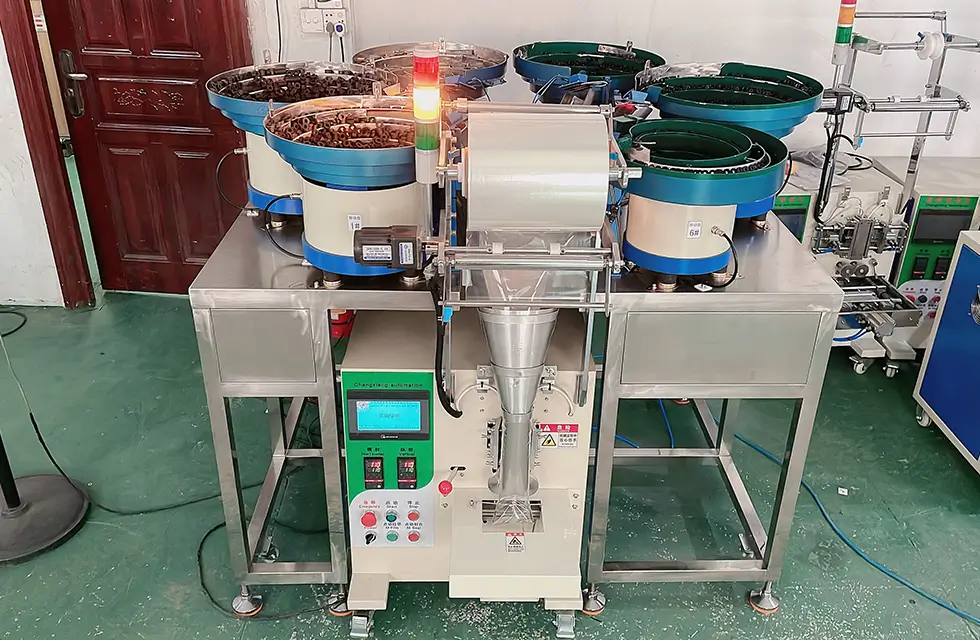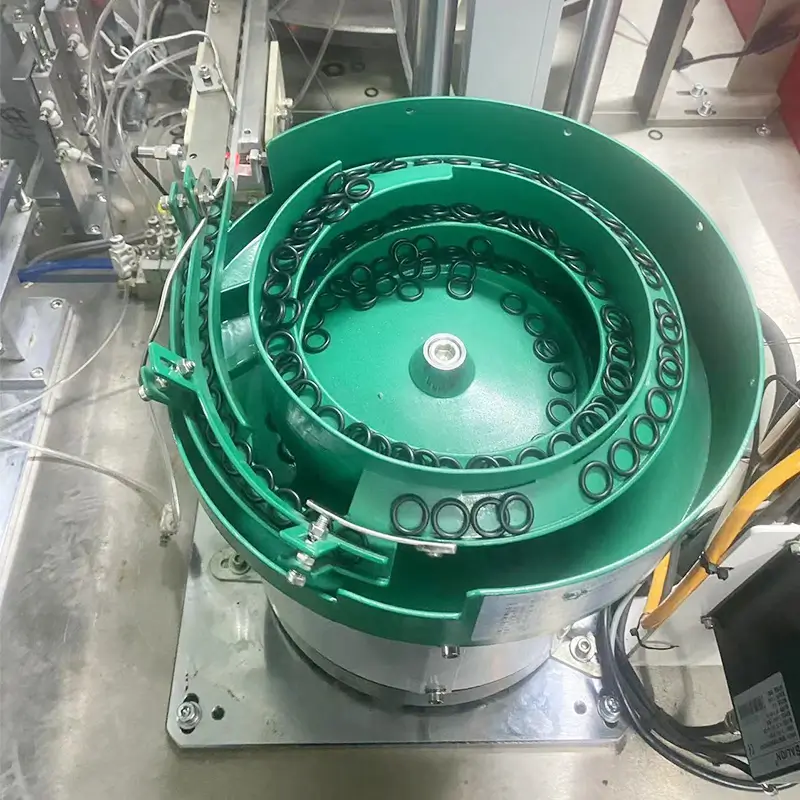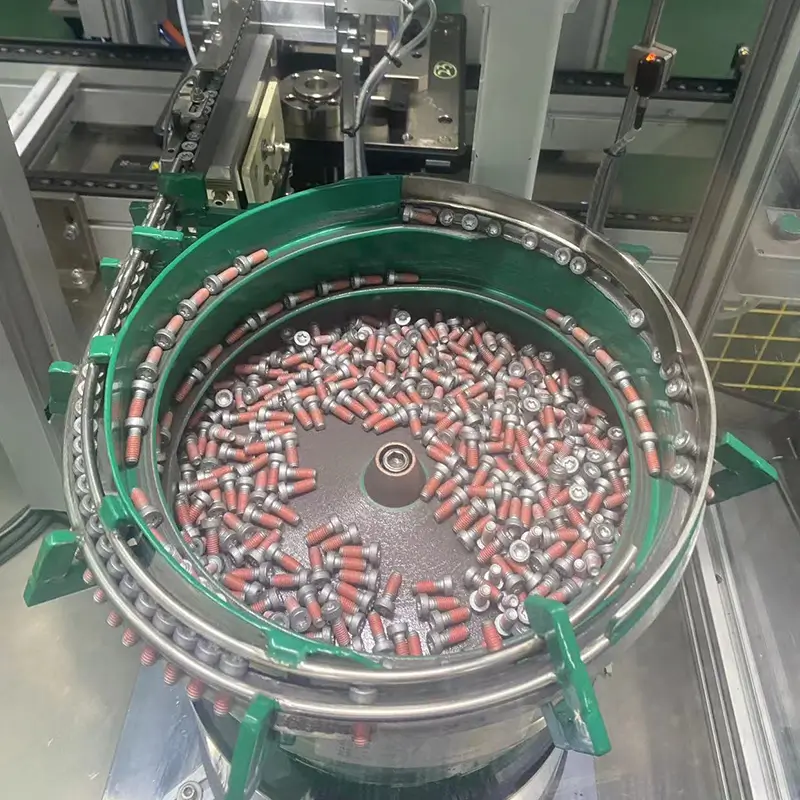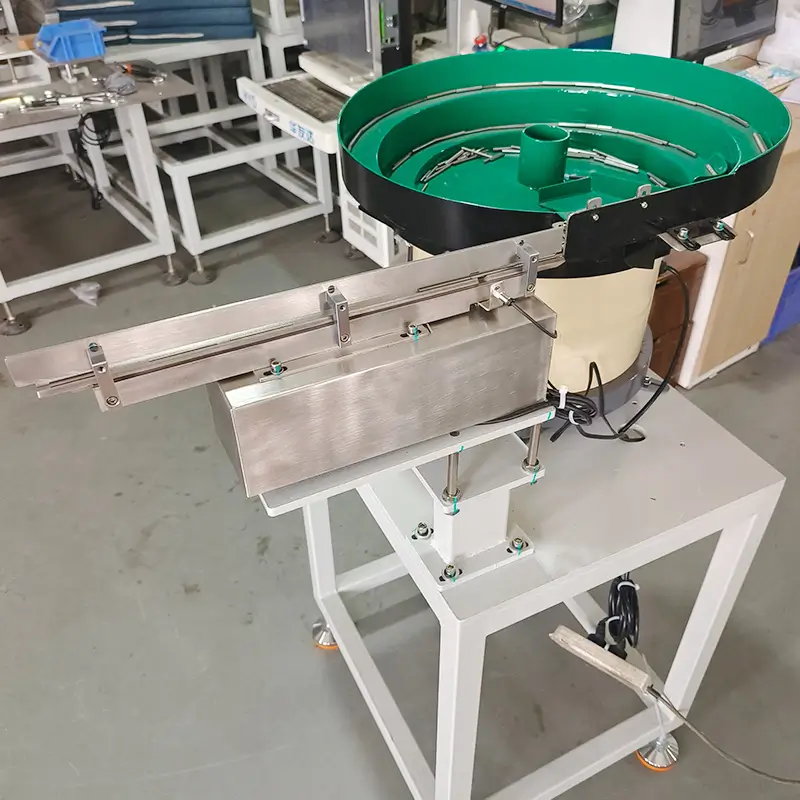Les bols vibrants sont essentiels à la production automatisée moderne. Ils prennent de petites pièces dispersées, les ordonnent et les transportent au bon endroit, le tout avec des fréquences et des amplitudes précises. Cette méthode d'alimentation efficace optimise non seulement la production, mais améliore également l'efficacité d'une manière que la manutention manuelle ne pourrait jamais offrir. Examinons leur fonctionnement et pourquoi ils révolutionnent tous les secteurs.

Comment fonctionne un alimentateur vibrant
Au cœur d'un bol d'alimentation se trouve son système d'entraînement unique, généralement alimenté par un entraînement électromagnétique ou un ressort mécanique. Voici son fonctionnement : lorsque le courant traverse la bobine, il crée un champ magnétique qui attire l'armature. Ce mouvement fait vibrer le châssis selon un mouvement rythmique de va-et-vient.
Cette vibration n'est pas aléatoire : elle propulse les pièces vers l'avant, dans un mouvement de saut contrôlé, le long de la piste. Au fur et à mesure de leur déplacement, les pièces sont progressivement triées, triées et alignées jusqu'à leur sortie dans la bonne direction, prêtes pour l'étape suivante du processus.
Pourquoi les alimentateurs vibrants sont-ils si efficaces ?
Pourquoi les fabricants font-ils confiance aux doseurs vibrants ? Parce qu'ils offrent une efficacité, une précision et une flexibilité inégalées. Voici ce qui les distingue :
- Alimentation rapide et constante– Contrairement à la manutention manuelle ou semi-automatique, un alimentateur vibrant maintient les pièces en mouvement sans retards inutiles, réduisant ainsi les temps d’arrêt.
- Précision extrême– Le système garantit que chaque pièce est correctement positionnée, de sorte que chaque composant s’adapte exactement là où il doit aller.
- Gère divers matériaux– Qu’il s’agisse de métal ou de plastique, de grande ou de petite taille, ces doseurs peuvent traiter une large gamme de composants.
- Réduit les coûts– En automatisant l’alimentation des pièces, les entreprises réduisent les coûts de main-d’œuvre et améliorent l’efficacité opérationnelle à long terme.
- S'intègre facilement à l'automatisation– Les alimentateurs vibrants fonctionnent en parfaite harmonie avec les bras robotisés, les machines d’emballage et autres systèmes automatisés, ce qui en fait une solution idéale pour les lignes de production modernes.
Où sont utilisés les bols vibrants
De la construction automobile à l’électronique, alimentateurs vibrants jouent un rôle essentiel dans le bon fonctionnement des lignes de production.
- Industrie automobile– Ils garantissent que les écrous, les boulons, les rondelles, les joints toriques et les fixations sont introduits rapidement et avec précision dans les moteurs, les transmissions et les autres composants du véhicule.
- Fabrication d'électronique– Parfait pour la manipulation de minuscules vis, puces et autres micro-composants dans l’assemblage de circuits imprimés.
- Dispositifs médicaux– Essentiel dans la préparation de petites pièces pour instruments chirurgicaux, seringues et autres équipements médicaux.


Alimentateurs vibrants dans les chaînes de montage automobiles
Réflexions finales
Les bols vibrants ne sont pas un simple équipement industriel. Ce sont les héros méconnus de nombreuses lignes de production à grande vitesse. Grâce aux progrès constants de l'automatisation et de la robotique, ces bols vont continuer à évoluer, devenant toujours plus intelligents et efficaces. Si vous travaillez dans la fabrication et que vous n'en utilisez pas encore, il est peut-être temps de reconsidérer votre choix, car une telle efficacité est difficile à égaler.
Contactez Swoer
Obtenez une solution d'alimentation personnalisée

